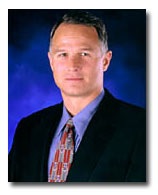Y Combinator is now accepting applications for the winter 2009 funding cycle happening in Mountain View, CA. It’s possible for Canadians to get accepted to the Y Combinator program. All of Canada is following the exploits of Michael Parkatti and Mike Marrone during the summer cycle in Boston. We’ve covered the story, with Austin Hill interviewing both Michael and Mike. It’s important for Canadian entrepreneurs to apply. The Y Combinator program is about the experience and connections that you can build during the three month program.
The Winter 2009 Y Combinator is offering $5000 + $5000n where n = the number of founders in exchange for between 2-10% of the company. Assuming 2 founders and Y Combinator owning 6% of company, this works out to a pre-money valuation of $250,000 and a post-money valuation of $265,000. It’s a great way to seed a company.
Jevon talks about startups being about execution, the Y Combinator program is all about execution.
7. Once your company exists, we’ll write a check to it for the rest of the money. You can spend the money however you want.
8. Y Combinator is not an incubator. We have space you can use if you need to, but we expect you to work out of wherever you find to live. It is no coincidence that so many successful startups have started this way; it’s the ideal setup for the initial phase.
9. Throughout the 3 months we have regular office hours for startups who want to talk about what they’re building, or get advice in dealing with investors. We also have occasional open houses at YC on Thursday afternoons.
10. From January through March we’ll have dinners every Tuesday for all the founders. At each dinner we’ll invite an expert in some aspect of startups to speak.
It is a program that is designed to help you take an idea, and learn to execute with very little capital resources. The benefits of mentorship, guidance and a growing network of alumni and entrepreneurs in Silicon Valley and around the world. You get enough cash to pay for your living expenses for 3-4 months. You get a cohort of entrepreneurs you can have a shared experience with. You have scheduled diners with the Y Combinator team and an expert about some aspect of startups. You get 2 investor days where follow on investors are brought in and use the Y Combinator to do deal flow. It’s a great opportunity.
The original motivation for Y Combinator was benevolent, but this is not a charity. If our investments pay off, we can invest in more startups, and if they don’t, we can’t keep doing this indefinitely. So we’re looking for startups we think will succeed.
If you’re a small team of Canadian entrepreneurs looking for a chance. You should fill out an application the deadline to apply is October 17, 2007.




